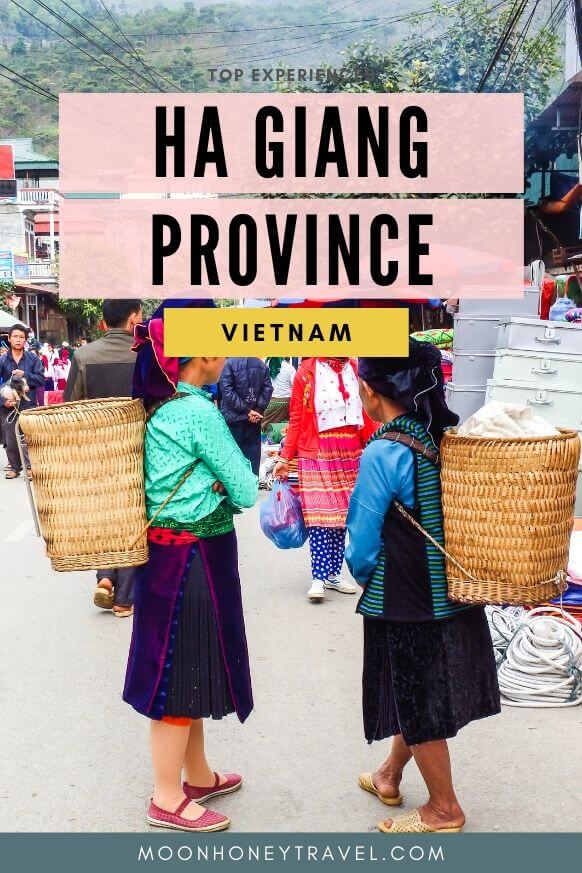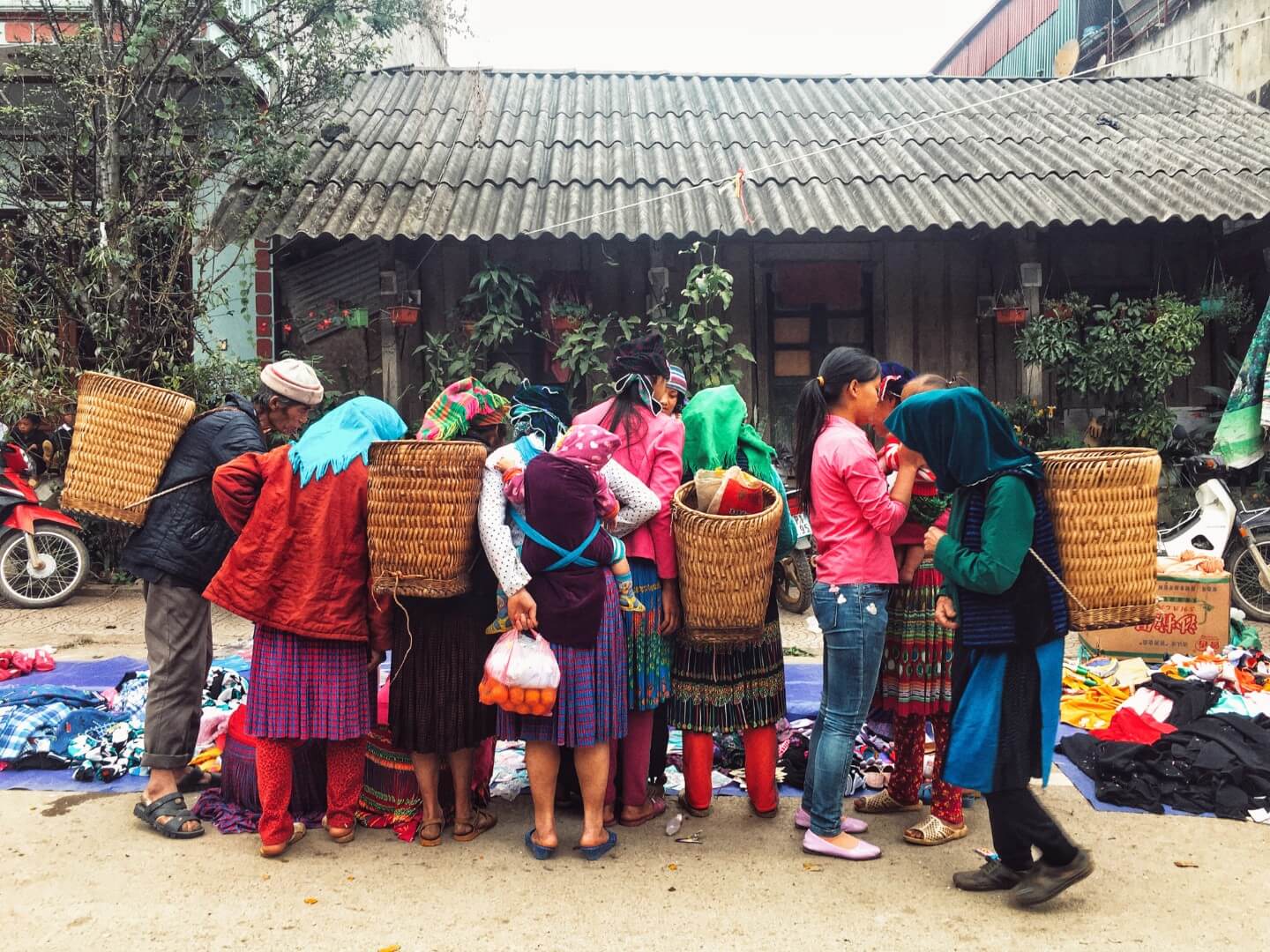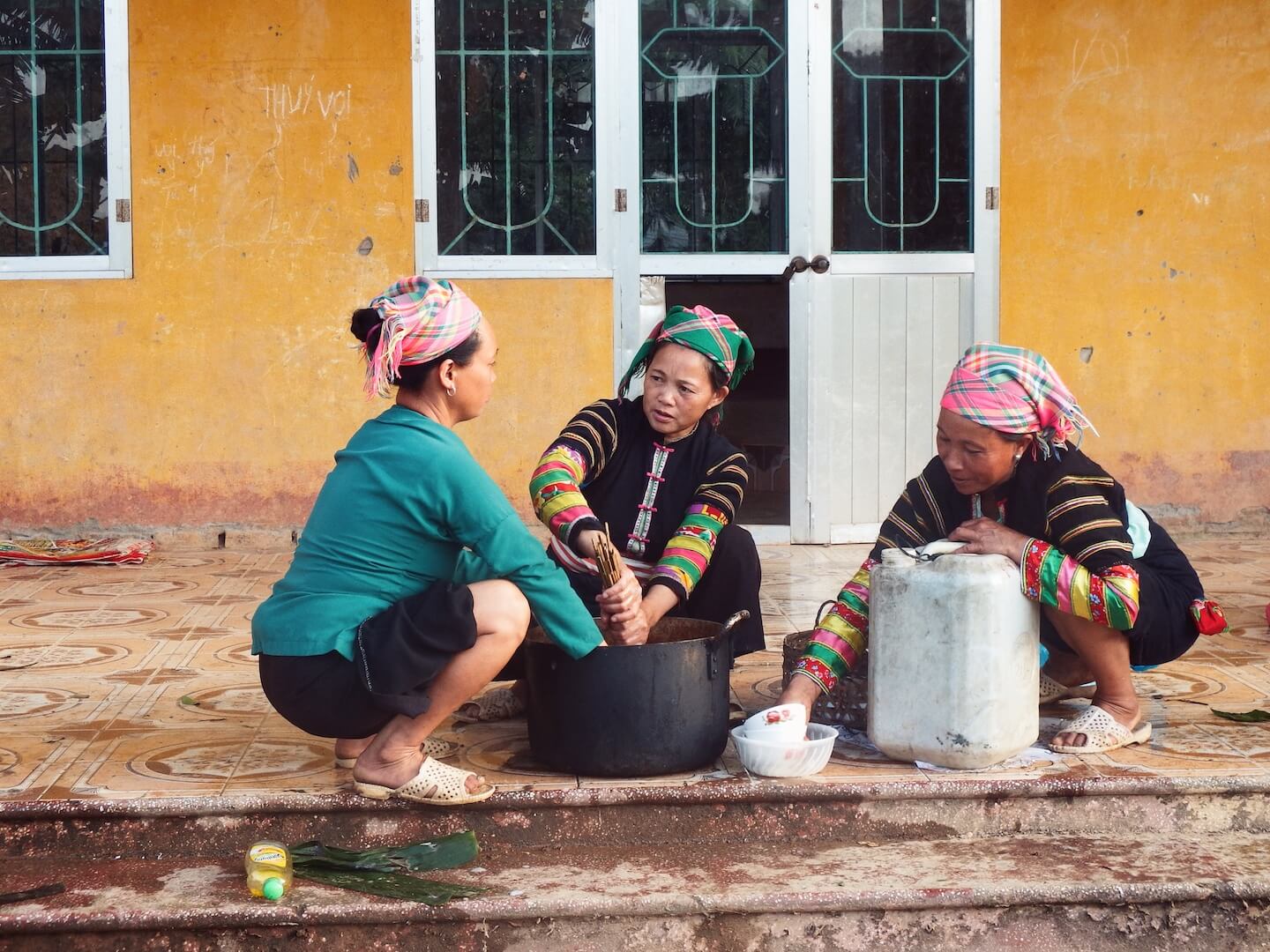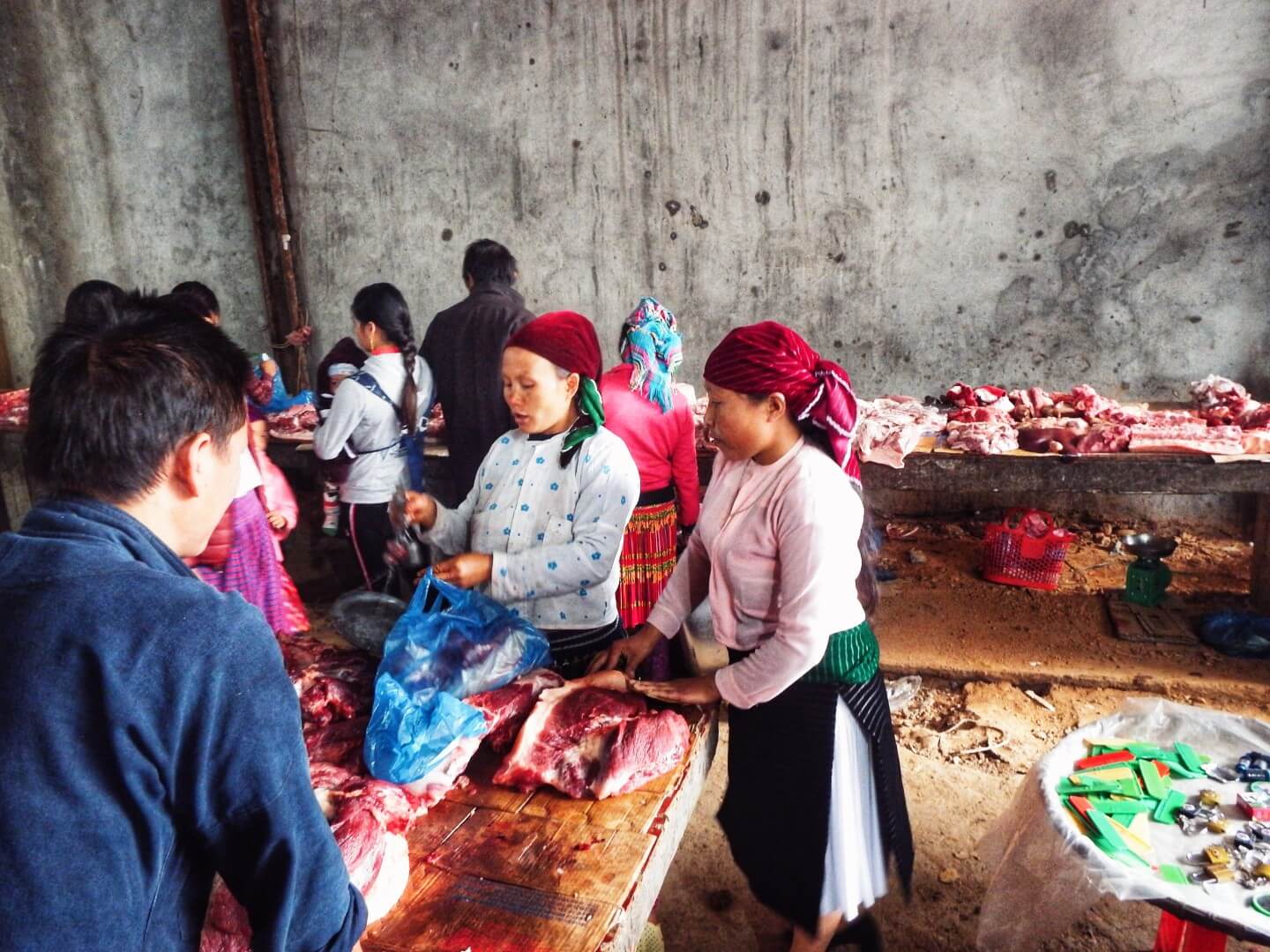Ha Giang is a province in northeastern Vietnam celebrated for its rocky scenery, mountain passes, and cultural diversity. This region is home to 17 different ethnic minorities, including Tay, Dao (Yao), White Hmong, and Black Lolo.
These groups intermingle weekly at regional markets, resulting in a colorful display of traditional ethnic dress and commerce. When we visited, we felt like we were walking into a National Geographic spread. Women chew betel leaf and dye clothing with turmeric. Children wield sickles and carry bundles of grass on their backs. Men smoke out of bamboo pipes and butcher buffalo on the sidewalk. And everywhere you go, local life is enlivened by a continuous chorus of domesticated animals and roaming water buffalo.
We traveled to Ha Giang in mid-November. Though we missed the rice harvest by a few weeks, there were plenty of things to fall in love with.

What to See & Do in Ha Giang Province
- Visit the Bao Lac Market
- Explore the Dong Van Karst Plateau
- Visit the Meo Vac Sunday Market
- Stay in a Tay homestay in Thôn Tha
- Respectfully Visit a Black Lolo Village
This post links to products and services we love, which we may make a small commission from, at no extra cost to you. Thank you for supporting our blog!! – Sabrina and Kati
1. Visit the Bao Lac Market

The Bao Lac Market takes place every 6 days based on the Lunar Calendar. White Hmong, Black Lolo, Dao (Yao) and Tay people gather here on market mornings to buy and sell livestock, fresh herbs and vegetables, meats, clothing, and appliances (e.g. knives, scissors). It’s a lively scene to witness. Caged ducks and puppies are sold next to intimidating knives. Fresh fruits and vegetables are sold next to tables of raw meat.
In many ways, the marketplace feels like the women’s domain. They conduct most of the sales, with the exception of large livestock (water buffalo and cows). As a visitor, your eyes always gravitate to the women, because of their traditional attire. As you take it all in, motorbikes squeeze by you. And, locals seem to mirror your own astonishment and bewilderment as they stare back at you.
2. Explore the Dong Van Karst Plateau
The Dong Van Karst Plateau Geopark is a rocky mountainous area extending between Quan Ba, Yen Minh, Dong Van, and Meo Vac.
Cone-shaped peaks extend softly to the sky. Tiny hamlets, situated on mountain slopes, blend into the rocks. Beehive farms dot the landscape. And in the fall, buckwheat fields are in full bloom.
One of the most celebrated roads in Vietnam is the Ma Pi Leng Pass, which bisects the Dong Van Karst Plateau. The pass connects the towns of Meo Vac and Dong Van and winds above the Nho Que River.
Look for accommodation in Meo Vac, Dong Van, Quan Ba or Yen Minh.
Visit the Meo Vac Sunday Market
The Meo Vac Sunday Market is a riot of color and sound. Hmong men, women, and children enthusiastically shop for clothing, drink rice wine, smoke out of bamboo pipes, and sell livestock. The women are clad in traditional dress and wear baskets on their backs. At the meat market, people evaluate the quality of raw meat with a poking technique. Boys carry their purchased chickens upside down. Men lead pigs and cows through the packed streets. This display of local life is authentic. Unlike so many other places, it’s not contrived or set up for tourists. It’s real.
This weekly market is an important part of social and economic life. For those that don’t have access to a motorbike, getting here is a journey in and of itself. If you drive between Meo Vac and Dong Van on a Sunday, you’ll see women and children trekking in sandals to and from the market. With children strapped to their back, White Hmong women navigate the terrain with such ease, you can’t help but contemplate your own agility.
4. Stay in a Tay homestay in Thôn Tha

Thon Tha must be the most beautiful Tay village in Vietnam. Hidden away, this small hamlet seems altogether self-sufficient and detached from the world. Each stilted house has a fish pond, a garden, and some livestock.
We stayed in Cay’s homestay for two nights. The dinners were exceptionally delicious. Eating with the family was truly delightful, though somewhat of an intoxicating experience. Anytime you dine with a local family in Vietnam, you’re expected to drink a lot of rice wine. Much to the family’s dismay, I (Sabrina) couldn’t keep up.
We also had the opportunity to go on a 7-hour guided trek through palm forests and rice paddies. We saw bell-wearing water buffalo, women making toothpicks, and endless forest of palm trees. The highlight was eating lunch with a local Dao (Yao) family in their home. Though our views were obstructed by an impenetrable layer of fog, we had a great day.
MAYBE YOU LIKED:
7 Days Ho Chi Minh & Hanoi Golf Week with 5 rounds
Ho Chi Minh- Vung Tau Golf Tour 6 Days 5 Nights with 2 Rounds
The Princess Junk 3 days in Halong Bay
5. Respectfully Visit a Black Lolo Village

The Black Lolo are an ethnic minority living near Bao Lac. They have a particular dialect and style of dress that distinguishes them from other ethnic minorities living nearby.
Seeing Black Lolo women gathered together in their village, or at the marketplace is a visual feast. Their traditional dress is unique and gorgeous, and they wear it daily, not just for special occasions.
Black Lolo people live in stilted houses, directly above their livestock. It’s common for a family of three generations to live together in one house. The family shares a single living space. Beds are positioned in each corner of one large room and are sectioned off with curtains.
Tips for Visiting Ha Giang Province

- There is no public transit between the towns Dong Van and Meo Vac (Ma Pi Leng Pass). That means that exploring this area is best done via motorbike, or with a hired driver.
- As of November 2017, foreigners still have to pay a $10 permit to travel through Ha Giang Province. It’s unclear whether that fee is $10 per person, or $10 per travel group (e.g. couple). We paid $10 per person, but we’ve read elsewhere that it’s $10 per group.
- If you want to see the rice harvest, it’s best to visit Ha Giang between mid-September and mid-October. All the terraced rice fields were already harvested by mid-November.
- Buckwheat flowers bloom between September and November.
- Ask for permission before photographing locals.




 Viet Green Trip for Android
Viet Green Trip for Android Viet Green Trip for iOS
Viet Green Trip for iOS Review Us at Trustpilot
Review Us at Trustpilot Review Us at Tripadvisor
Review Us at Tripadvisor


